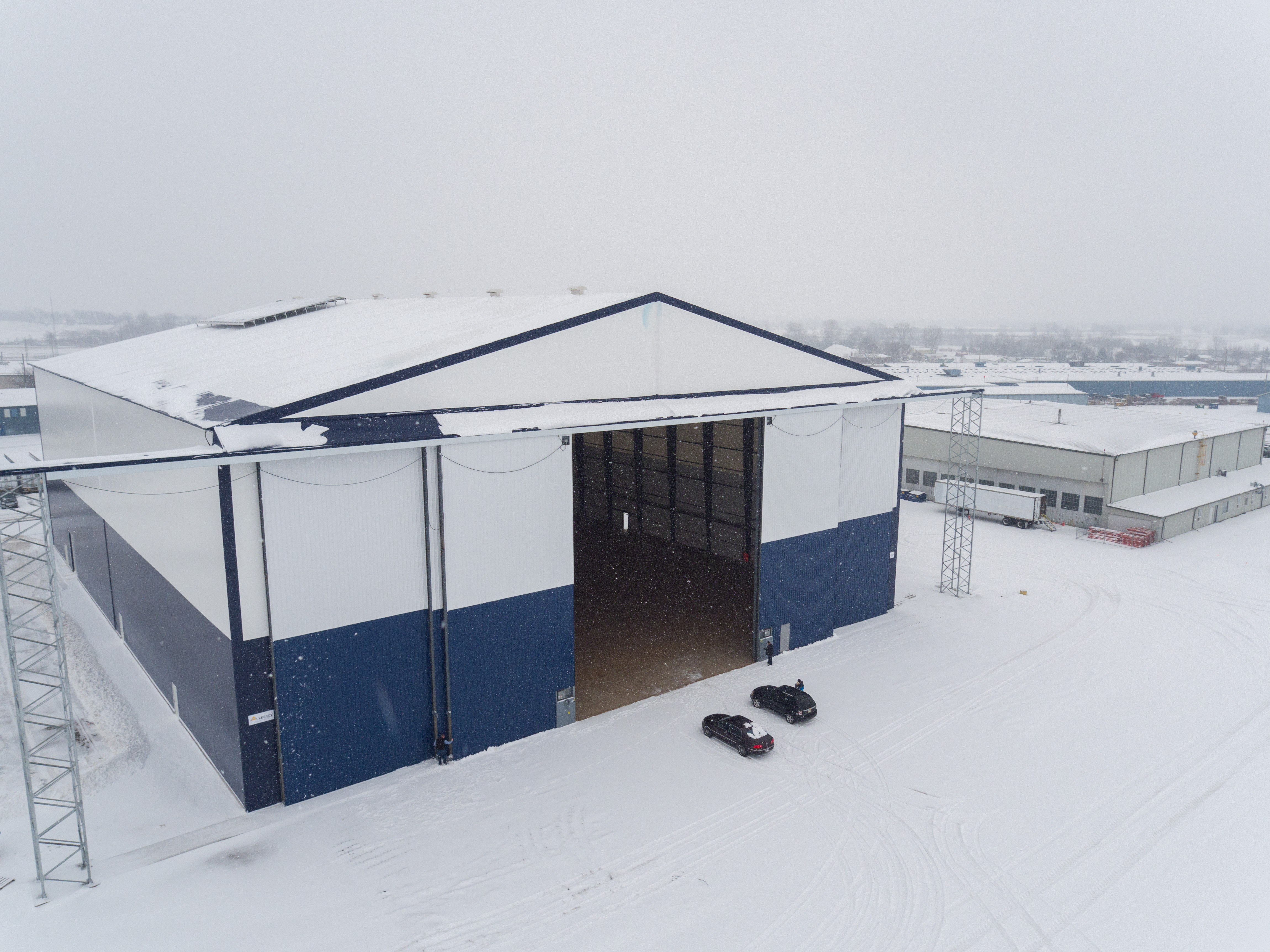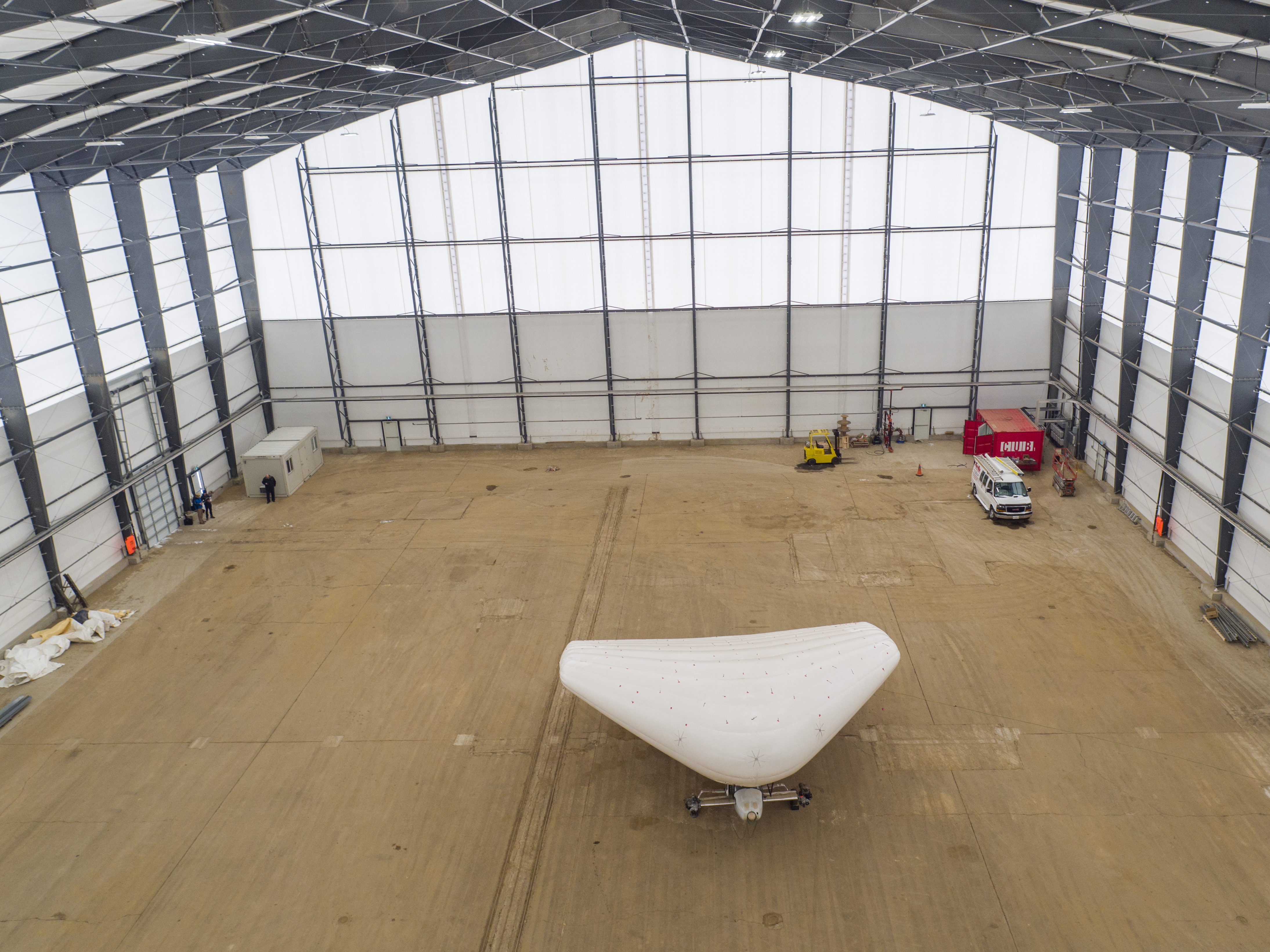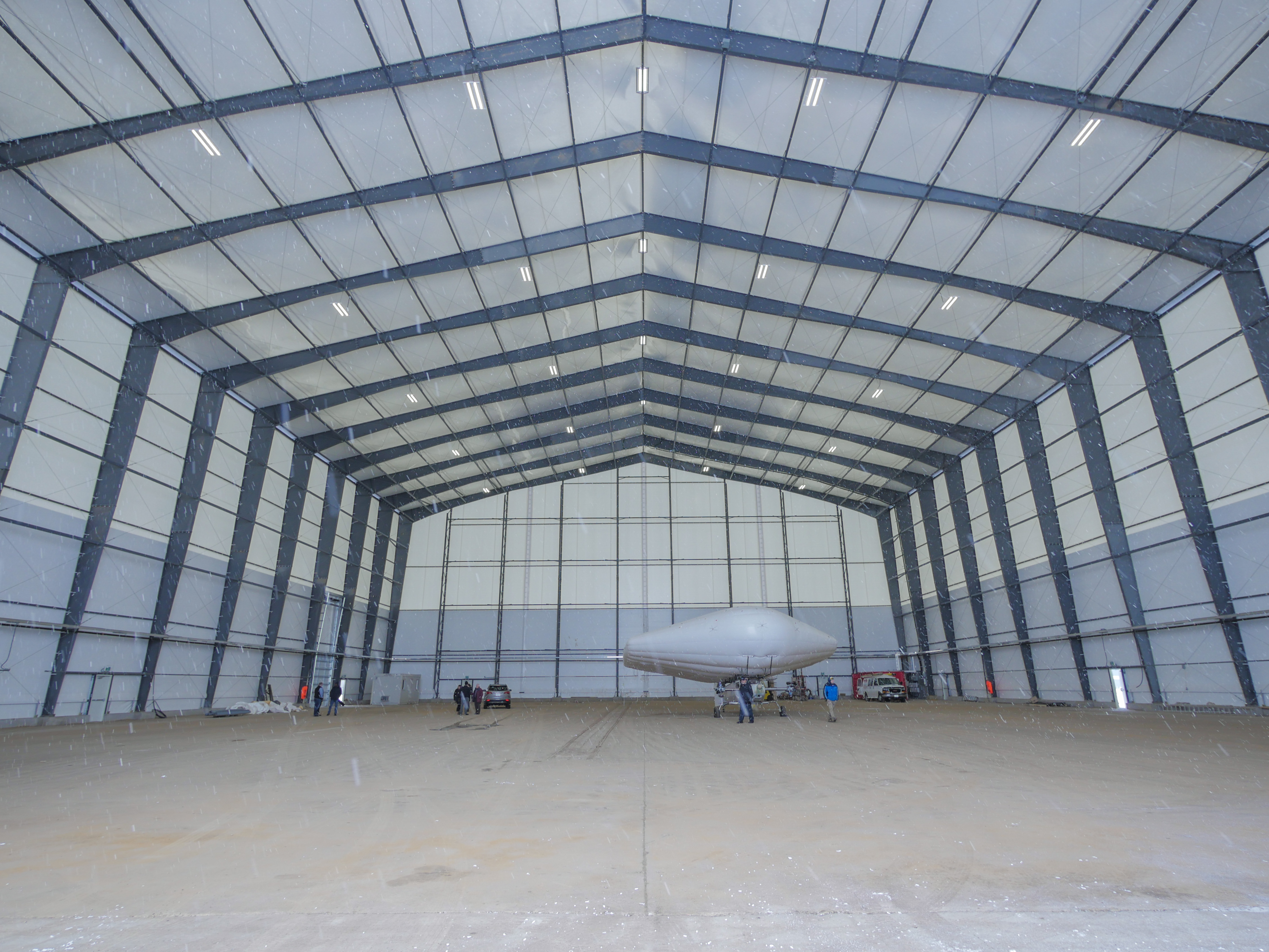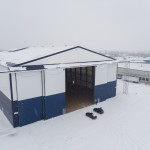Company:
Legacy Building Solutions of Canada Edmonton, AB
Project Details
Fabric 1
OTHER
Producer:
OTHER
Supplier:
OTHER
Engineer Name 1
Dwayne Moench
Engineer Company 1
Legacy Building Solutions
Project Manager Name
Jim Kumpula
Project Manager Company
Legacy Building Solutions
Please describe the project specifications
Solar Ship Inc. builds hybrid aircraft to service remote areas without relying on fossil fuels, roads or runways. Their commitment to innovation and sustainability extends to their hangars - they required an off-the-grid structure for aerospace assembly and operations. Together, Legacy Building Solutions of Canada, Canadian Energy and Solar Ship designed a free span hangar measuring 176’ x 230’ 8” with 60’ eave clearance to accommodate several sizes of aircraft. The hangar uses 15 oz. FR PE fabric by Intertape Polymer Group on a rigid steel frame.
This project is a building-integrated PV project incorporating (i) a lightweight relocatable building structure that covers 40,000 sf, (ii) a 50 kW rooftop PV system integrated directly onto the exterior roof structure, (iii) technology comprising a load-shifting battery and power control system, packaged in a shipping container, to permit 100% off-grid power in the building, with diesel back-up available.
What was the purpose of this project? What did the client request?
Top level requirements for the building included:
• Lightweight steel-and-fabric structure easily transportable to site and relocateable if necessary
• Roof frame includes attachment points for 200 standard PV modules (50 kW)
• Simple wiring down to a shipping container featuring WiFi monitoring and smart controls, long-life batteries and reliable inverters to power 120V single- and 208V three-phase load
• No grid connection, allowing for project replication in remote regions
• Start-to-finish construction schedule of 3 months or less
• Highly adaptable and scalable inverters were used. These units are a self-contained DC to AC inverter, battery charger, and integrated AC transfer switch. The inverters were set-up in a hybrid configuration that allows for the seamless operation of solar along with the back-up generator, extending the autonomy of the system.
• The CUBs use Tubular Gel batteries which are designed for deep cycling and demanding applications. These batteries utilize Advanced Tubular Plate Technology to deliver long service life with maintenance-free requirements.
The client needed free span area to assemble, store and charge solar-powered aircraft. In keeping with their mission, Solar Ship also required the hangar to run completely off the grid. The natural light in a Legacy fabric structure reduced the amount of energy required, and the necessary power was provided by rooftop solar panels.
What is unique or complex about the project?
This building is the world’s first ever off-grid aircraft maintenance facility. The innovation lies in the integration of various commercial off-the-shelf elements into a pre-engineered building that meets all the government code requirements for a regulated urban airport setting yet also meets the robust reliability needs of an offgrid, remote set-up. Load-shifting micro-grids sourced by distributed generation still require a large amount of customized planning, engineering and construction expertise.
All elements of the building, including large freespan area, tall clearance and bi-parting hangar doors, are designed to allow aircraft easy access. The steel frame was designed to support the loads from the heavy solar panels and racking, large door opening and snow load.
What were the results of the project?
Solar Ship began using the hangar in February of 2016. In recognition of the hangar's unique design, it was awarded Game Changer Product of the Year by the Canadian Solar Industries Association (CanSIA). The award recognizes Legacy Building Solutions, Canadian Energy and Solar Ship for the unique hangar design. In remote hostile environments, shelter and power can command a very high price. Where diesel-generated power is the norm, electricity costs often exceed $1.00 per KWh. Our project can deliver a high quality work-or-living space below conventional $-per-sf metrics AND deliver reliable power at less than $0.50/kWh. The first winter’s operations confirm the project economics, and with falling costs due to volume/debottlenecking the economics will improve even further for deployment of future projects
Content is submitted by the participant. IFAI is not responsible for the content descriptions of the IAA award winners.



 TEXTILES.ORG
TEXTILES.ORG





